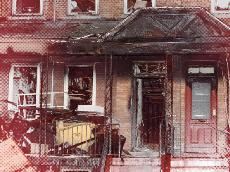While I slept comfortably in a Caribbean house on the island of St. Croix during spring break, in The Bronx, nine children and one adult were killed in the deadliest New York City fire since 1990. Late March 7, a fire started within a two-family row house from overheated space heaters that came into contact with a mattress on the first floor. Out of the 22 occupants within the house, 10 are dead.
The fire began on the first floor and rose to the fourth floor by what firefighters call a “chimney-like effect” due to it being driven up the stairs by wind through the back door and a broken window, making the fire stronger every 30 seconds.
According to the fire report, there were two smoke detectors located within the house, but neither of them had batteries.
A woman sleeping in the house woke up before 11 p.m. and fled with her five-year-old child to the fourth floor instead of calling 9-1-1. Rather than closing doors, she left them open and proceeded to recruit household members to fight the fire.
At 11:07 p.m., a neighbor made the first frantic 9-1-1 call, and by 11:10 p.m., firefighters arrived on the scene.
“They allowed it to build up for awhile, in my mind,” said Lt. Larry Lanza to The New York Sun. Lanza, one of the first on the scene, said that the inside was “black to the floor,” meaning there was zero visibility.
Because of the delay, firefighters were unable to rescue as many people as they might have, resulting in the deaths of 10 people, nine of them children.
“Seconds count in something like this,” Mayor Bloomberg said in a press release. “Closing the door would have given everybody in this building a much better chance to escape.”
Mamadou Soumare received a call from his wife, who said there was a fire in their home. By the time he got back to his residence, it was too late. His wife, Fatoumata, 42, was found dead on the fourth floor. His 3-year-old son, Djibril, and his twin six-month-old daughters, Sisi and Harouma, were found dead in their cribs. Only three of his children survived.
A woman leaning out of a second-story window threw a child down to two men waiting on the pavement. After the first child, the woman threw another, who hit a porcelain bathtub on the first floor, and then the woman, herself, jumped and hit the pavement. Currently, the three are in an intensive care unit.
“All of the victims died of smoke inhalation,” Ellen Borakove, a spokeswoman for the medical examiner’s office, said to The New York Sun. There were 20 total injured, including four firefighters and a paramedic.
On March 12, the families had a private funeral ceremony. Hundreds of mourners lined outside of the mosque on blue tarps to kneel in remorse for the deaths within the Muslim community.
“The fire has caused a lot of outrage and upset in the community, outrage because so many helpless children died in the fire,” said sophomore Ebony Knowlin, resident of The Bronx, via e-mail.
Unfortunately, the families affected were all Malian immigrants who may not have had citizenship within The United States. The surviving family members wish to bring their dead home to Mali for a proper burial; the problem is whether they can return to Mali and then back again to The United States. This problem is currently being addressed within the Department of State.
Nonetheless, Mayor Bloomberg said in a press release that this was one of the worst fires since 1990, when a Bronx nightclub caught on fire and killed 87 people.
“To the Magassa and Soumare families: New York is your city, America is your country. And we all grieve together in this,” said Mayor Bloomberg after the service on March 12. “With you, we all pray to be together again one day. As it says in The Koran, ‘We all came from God, and we will all return to God again.'”
Suleiman Sidibe, a schoolteacher and fellow immigrant from Mali told The New York Times, “I saw humanity here. You don’t see that often. People think New York is like a solid wall. It’s not.

